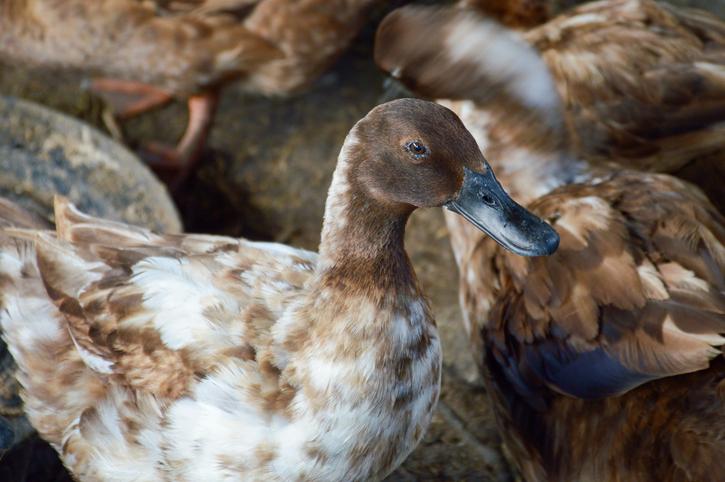As South Korea and the Philippines report new highly pathogenic avian flu outbreaks, the US Department of Agriculture (USDA) today proposed a change in the way it reimburses poultry owners for avian flu response, moving away from a per-bird payment.
H5N7 outbreaks in 2 countries
The new outbreaks in South Korea and the Philippines both involved the H5N6 strain. South Korea's latest outbreak began on Dec 19, striking a broiler duck farm in the city of Yeongam in South Jeolla province, according to a report today from the World Organization for Animal Health (OIE).
All 31,300 birds were destroyed as part of response steps. The source of the virus is unknown, and an epidemiologic investigation is still under way.
So far officials haven't said if the virus found in the latest outbreak is a new reassortant that has turned up in a handful of countries. The outbreak occurred in the same area where a second variation of the reassortant was recently identified.
Elsewhere, the Philippines today reported another H5N6 outbreak, its fourth detection of the virus since August. The latest event began Nov 11 in Nueva Ecija province in the Central Luzon region, the OIE said in a separate report.
Of 42,000 susceptible birds, the virus killed 27,675, and the remaining birds were destroyed to curb the spread of the virus.
APHIS proposes reimbursement changes
The USDA's Animal and Plant Health Inspection Service (APHIS) today announced that it is proposing changes to the way it reimburses poultry producers for avian flu elimination activities in response to outbreaks.
The change affects floor-raised meat poultry facilities that experience notifiable avian flu outbreaks. Instead of a per-bird reimbursement rate, APHIS said it would provide a single flat rate that takes into account the facility's square footage and the cost of labor, equipment, and supplies to clean and disinfect equipment, materials, and barn interiors. APHIS said it would pay separately for materials that can't be safely or adequately cleaned.
APHIS said the previous flat rate it used was calculated on a per-bird basis. "After a thorough review, APHIS moved to a per-square foot basis for flat rates in order to make the process more cost-effective and reduce the impact to taxpayers," it said in a statement.
Also, APHIS said it is working on separate flat rates for caged layers, breeder birds, and ground birds (layers or housed poultry), and it added that the new rates would make payments for virus-elimination activities more equitable across facilities.
It invites the public to comment and is taking feedback until Jan 12, 2018.
Gwen Venable, vice president of communications for the US Poultry & Egg Association, told CIDRAP News that APHIS made the poultry industry aware this summer that reimbursement changes are likely, so today's announcement did not come as a surprise.
See also:
Dec 21 OIE report on H5N6 in South Korea
Dec 21 OIE report on H5N6 in the Philippines
Dec 21 APHIS statement



















